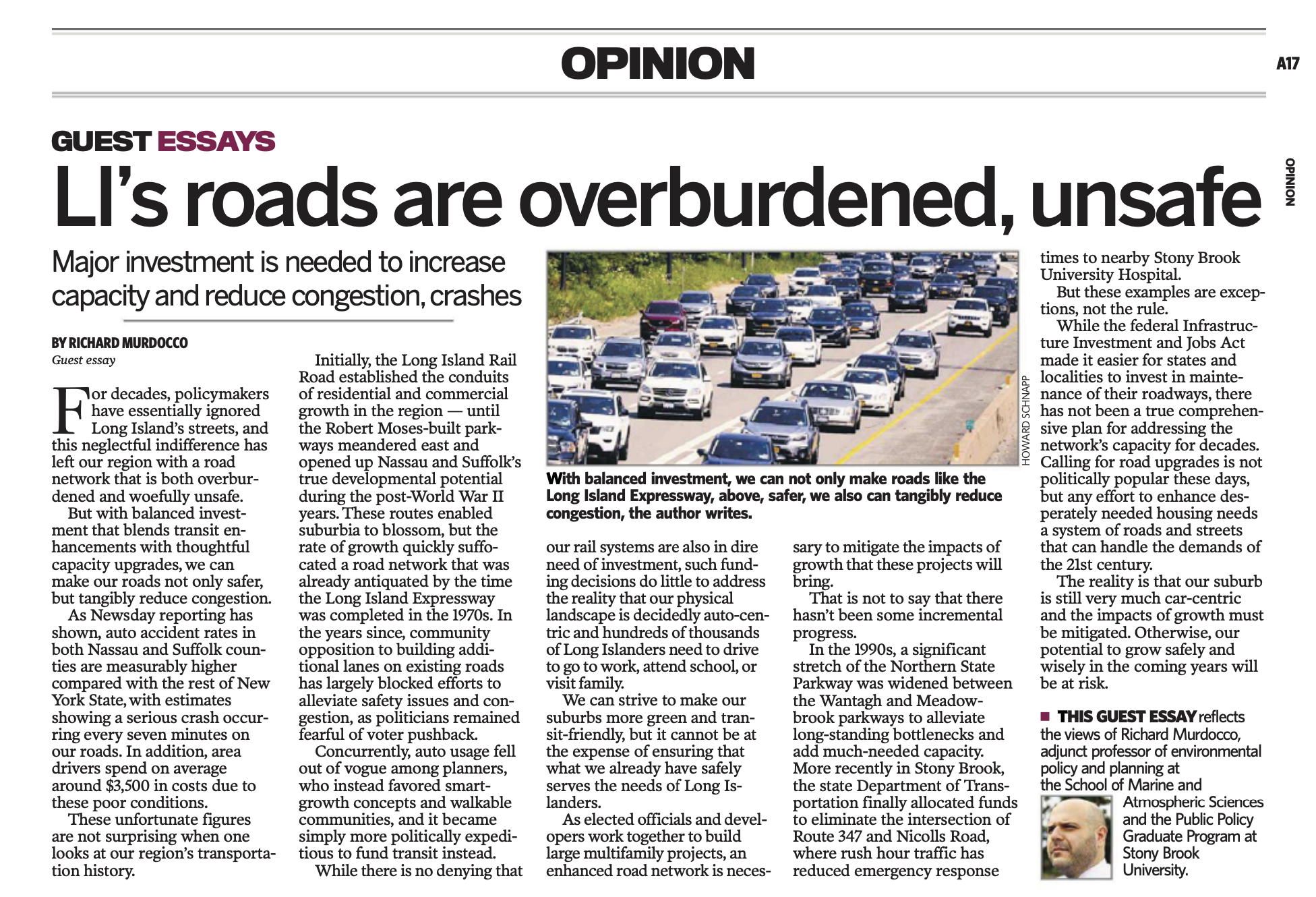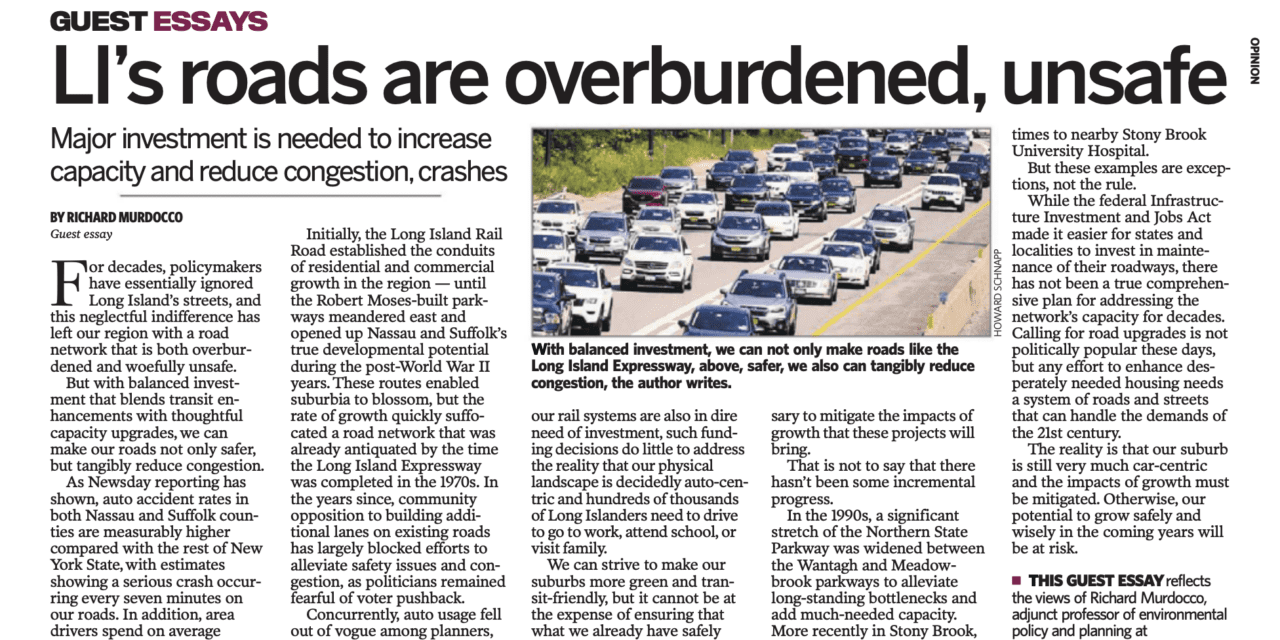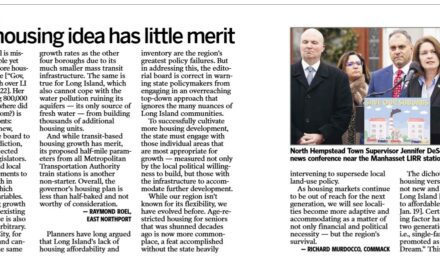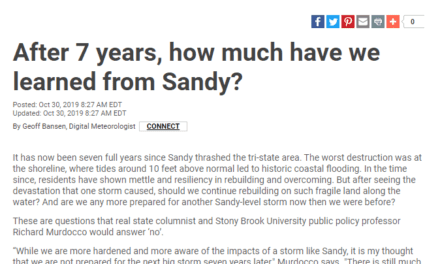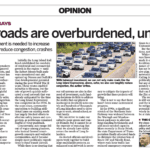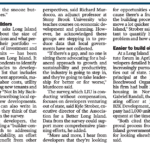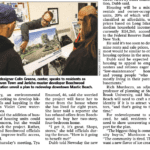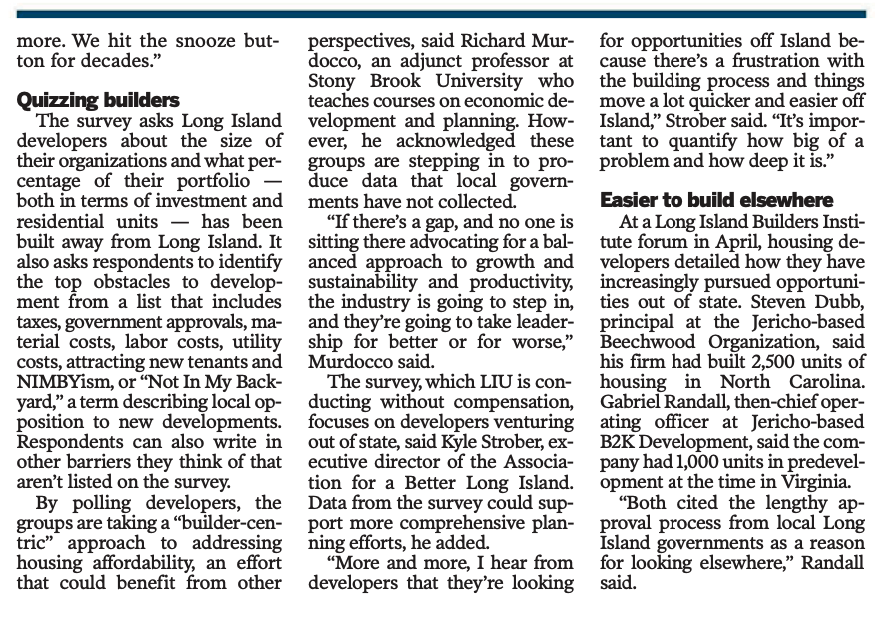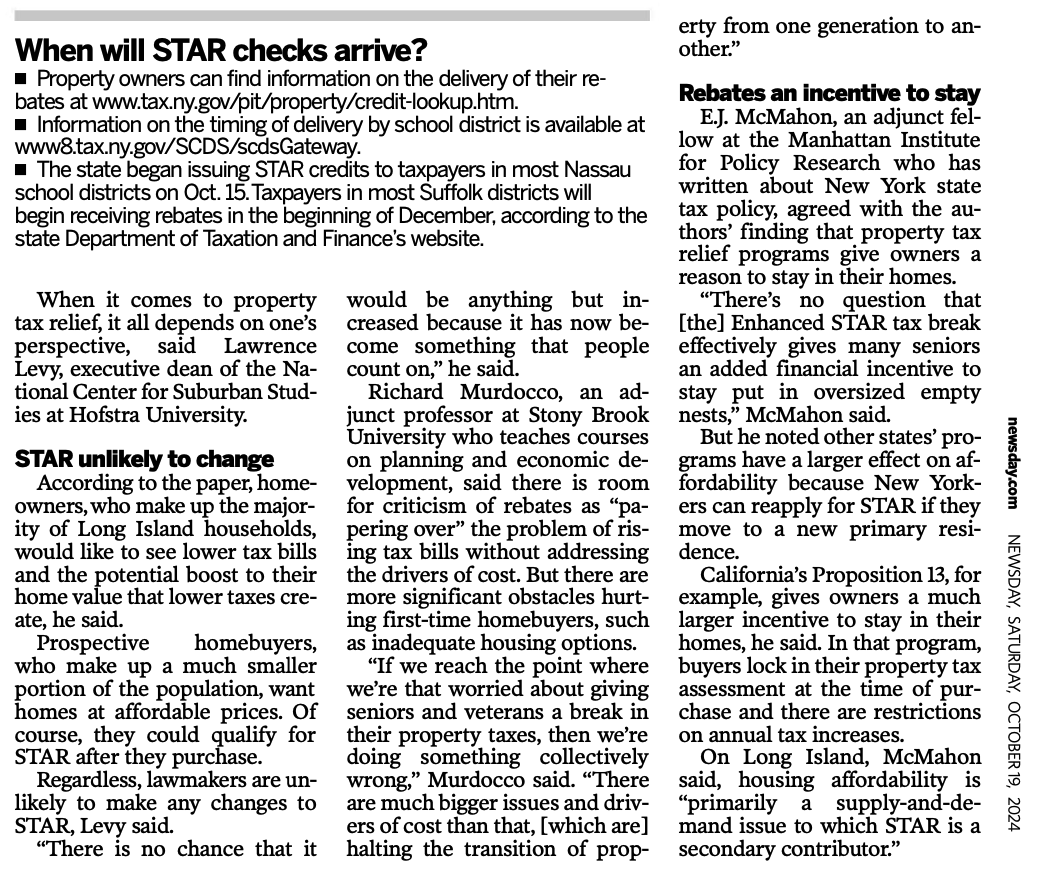The following guest essay was published in the Monday, April 14th, 2025 edition of Newsday on page A17. You can read the original here.
BY RICHARD MURDOCCO
For decades, policymakers have essentially ignored Long Island’s streets, and this neglectful indifference has left our region with a road network that is both overburdened and woefully unsafe.
But with balanced investment that blends transit enhancements with thoughtful capacity upgrades, we can make our roads not only safer, but tangibly reduce congestion.
As Newsday reporting has shown, auto accident rates in both Nassau and Suffolk counties are measurably higher compared with the rest of New York State, with estimates showing a serious crash occurring every seven minutes on our roads. In addition, area drivers spend on average around $3,500 in costs due to these poor conditions.
These unfortunate figures are not surprising when one looks at our region’s transportation history.
Initially, the Long Island Rail Road established the conduits of residential and commercial growth in the region — until the Robert Moses-built parkways meandered east and opened up Nassau and Suffolk’s true developmental potential during the post-World War II years. These routes enabled suburbia to blossom, but the rate of growth quickly suffocated a road network that was already antiquated by the time the Long Island Expressway was completed in the 1970s. In the years since, community opposition to building additional lanes on existing roads has largely blocked efforts to alleviate safety issues and congestion, as politicians remained fearful of voter pushback.
Concurrently, auto usage fell out of vogue among planners, who instead favored smart-growth concepts and walkable communities, and it became simply more politically expeditious to fund transit instead.
While there is no denying that our rail systems are also in dire need of investment, such funding decisions do little to address the reality that our physical landscape is decidedly auto-centric and hundreds of thousands of Long Islanders need to drive to go to work, attend school, or visit family.
We can strive to make our suburbs more green and transit-friendly, but it cannot be at the expense of ensuring that what we already have safely serves the needs of Long Islanders.
As elected officials and developers work together to build large multifamily projects, an enhanced road network is necessary to mitigate the impacts of growth that these projects will bring.
That is not to say that there hasn’t been some incremental progress.
In the 1990s, a significant stretch of the Northern State Parkway was widened between the Wantagh and Meadowbrook parkways to alleviate long-standing bottlenecks and add much-needed capacity. More recently in Stony Brook, the state Department of Transportation finally allocated funds to eliminate the intersection of Route 347 and Nicolls Road, where rush hour traffic has reduced emergency response times to nearby Stony Brook University Hospital.
But these examples are exceptions, not the rule.
While the federal Infrastructure Investment and Jobs Act made it easier for states and localities to invest in maintenance of their roadways, there has not been a true comprehensive plan for addressing the network’s capacity for decades. Calling for road upgrades is not politically popular these days, but any effort to enhance desperately needed housing needs a system of roads and streets that can handle the demands of the 21st century.
The reality is that our suburb is still very much car-centric and the impacts of growth must be mitigated. Otherwise, our potential to grow safely and wisely in the coming years will be at risk.
This guest essay reflects the views of Richard Murdocco, adjunct professor of environmental policy and planning at the School of Marine and Atmospheric Sciences and the Public Policy Graduate Program at Stony Brook University.
